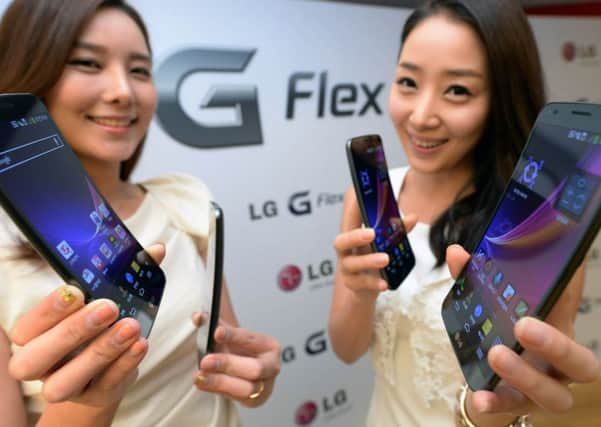What’s next for Scotland’s smartphone society?


Where once mobile phones were for phonecalls and text messages, evolving into smartphones relied upon for email access on the go, the latest generation has seen them become computers, cameras, sat navs, diaries, video streaming devices, even wallet replacements, with the rise of services like Apple Pay. So what’s up next for Scotland’s smartphone addicts?
Iris scanning
Japan’s technology conglomerate Fujitsu recently unveiled a prototype phone that identities users via iris scanning. Taking the next step from thumbprint identification, the Arrows NX F-04G smartphone identifies its owner using only their eyes. The technology is yet to be picked up outside of Japan but will no doubt make its way to global markets soon.
Flexible screens
Advertisement
Hide AdAdvertisement
Hide AdThe Samsung Galaxy Flex and LG G Flex, which debuted last year, have already started the curved screen trend. Although their flexibility is pretty minimal, it gives an insight into what we might see in the future. Samsung is rumoured to be releasing a handset that can fold in half like a book (or Nintendo DS) some time next year. Although it has yet to comment on the rumours, its development of the flexible Oled screen called Youm demonstrated the company’s ability to make high-resolution screens on extremely thin plastic. LG are also developing the bendy screens and even debuted a television so thin it can be attached to a wall using no more than magnets.
Augmented reality
Augmented reality has been used in smartphone apps for a few years now but it seems it’s soon to become an actual reality. Augmented reality technology allows you to scan your camera over anything – a shop or restaurant, for example – which it will identify and make suggestions based upon what it sees. Smartphones like the Nokia Lumia 1020 have already capitalised on AR, allowing the user to point the phone to a city street and see names of shops appear above buildings in the display, but this is likely to be developed into something you can use anywhere, without a wi-fi connection. Ikea has also tested it out, allowing customers to place furniture in their home using AR.
Smartphone-oriented healthcare
“The future of medicine is in your smartphone,” according to the Wall Street Journal. The smartphone has already acted as a portable laboratory in studies by the University of California, where it was used as a video-run microscope to measure worms wriggling in a finger-prick of blood. This helped identify people who were candidates for medications and who was at risk of a severe side effect from the drug. The future may also see the smartphone used as a “testing” laboratory that can take samples from your body’s temperature and fluids, scan them, and send the results to a doctor. One day we may even be able to use our phones for X-rays, Dr Eric Topol has predicted.
In-build projectors
Compensating for the small size of smartphone screens could be accomplished with inbuilt projector technology. The Samsung Galaxy Beam, released in 2010, included an inbuilt projector that could beam up to 50 inches in size at 15 lumens. If this becomes a widespread feature, smartphones could be used as portable games consoles, without the need for a television screen and incorporating voice and movement recognition.
3D screens and holograms
Following the release of 3D televisions and screens – in the likes of LG Optimus 3D, the Motorola MT810 and Samsung AMOLED 3D – the next step could be holographic images. It was reported that the ongoing development of a projection system that allows smartphones to display 3D holograms was presented at the annual Mobile World Congress, so we could soon be resizing images using our hands.